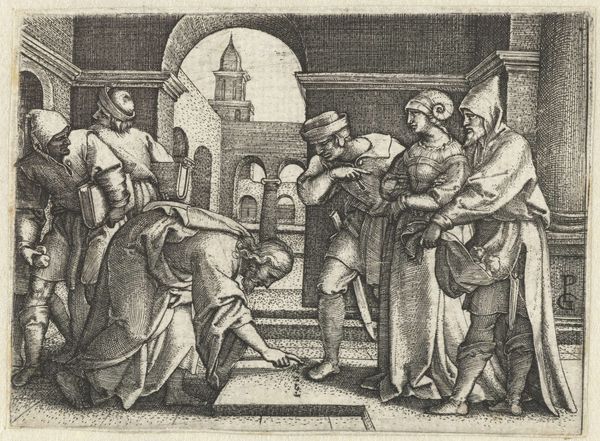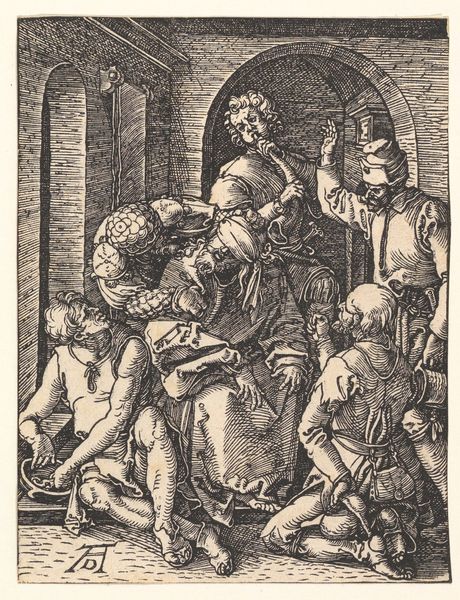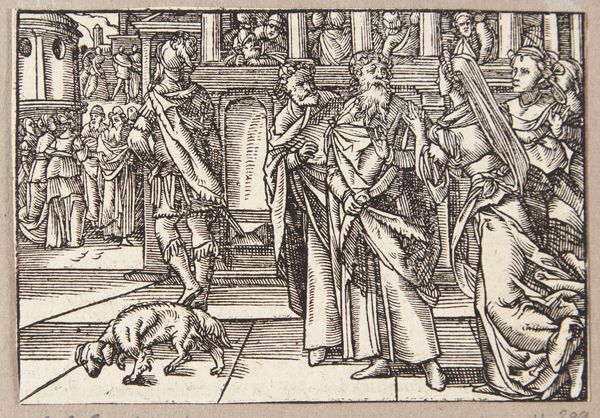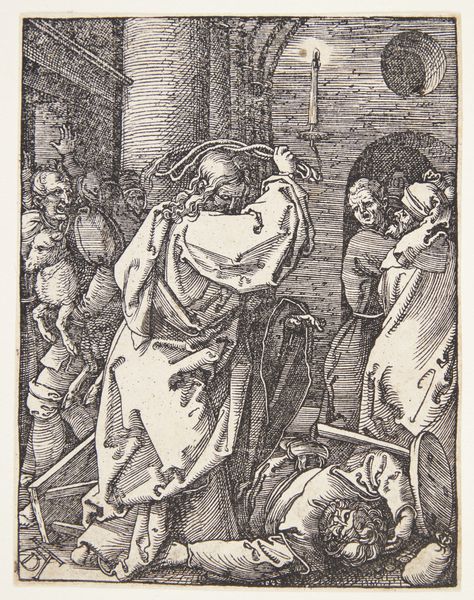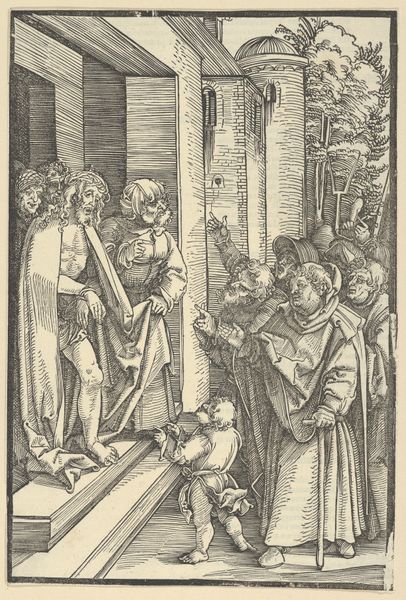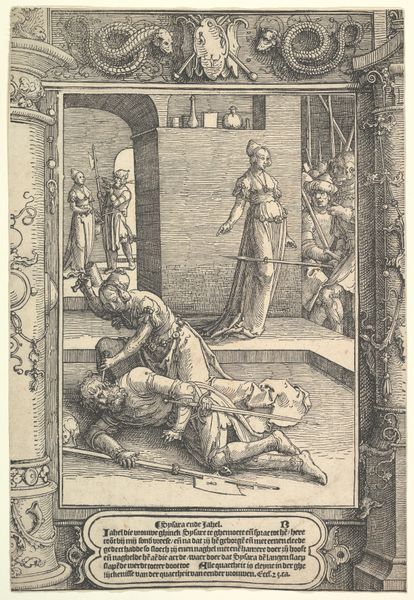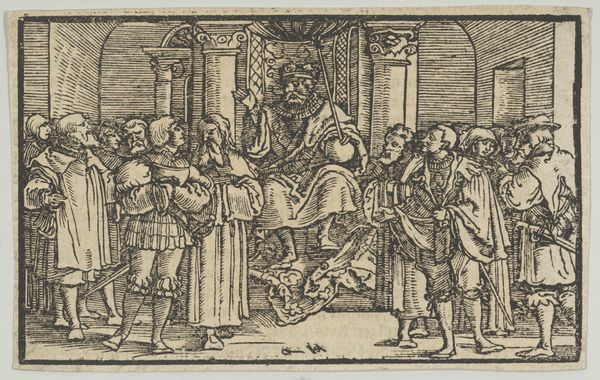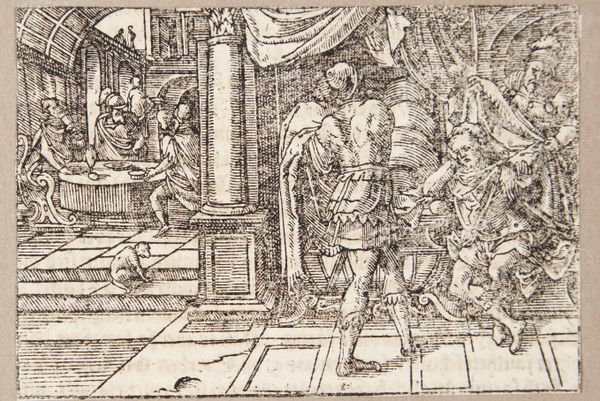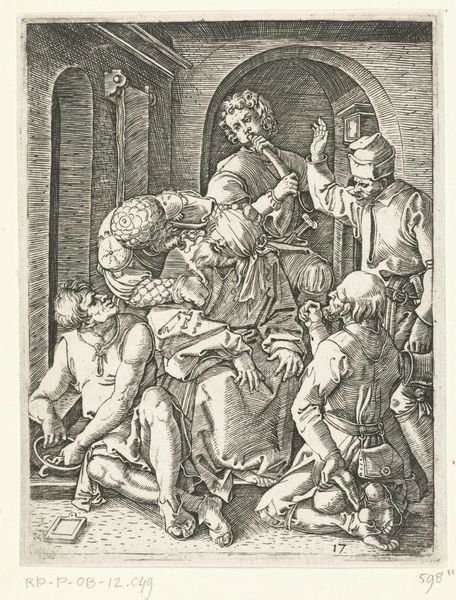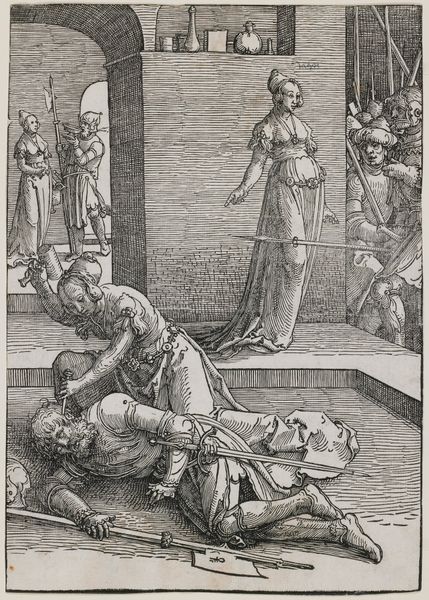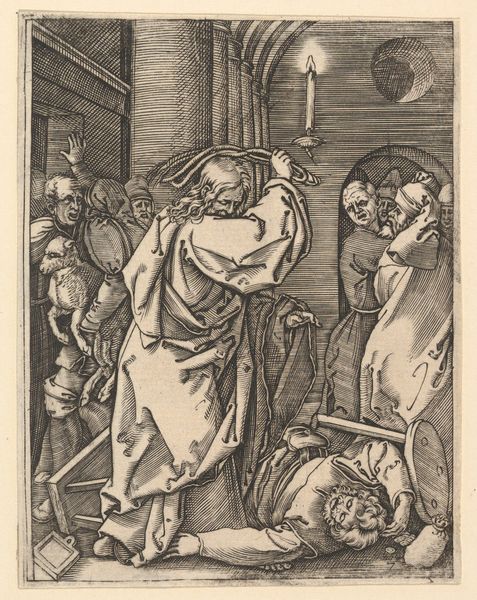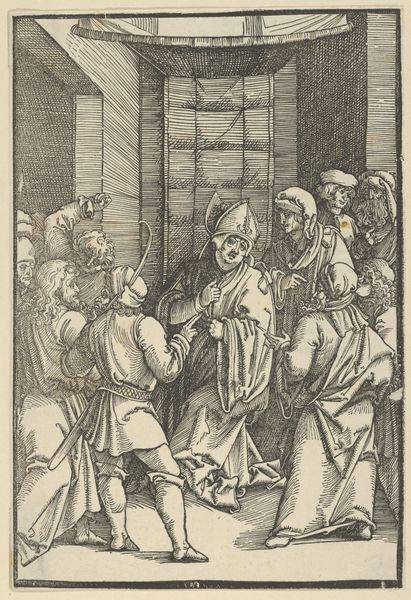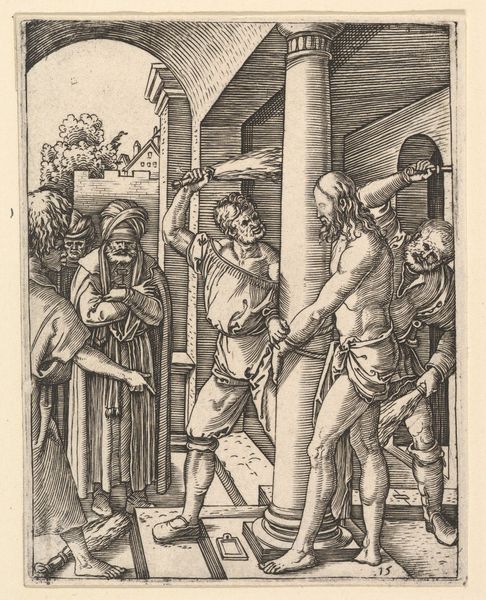
Dimensions: Sheet: 2 3/8 × 3 1/4 in. (6.1 × 8.3 cm)
Copyright: Public Domain
Georg Pencz’s tiny engraving, "Christ and the Adulterous Woman" invites us to consider the artist’s cultural context and the identities of those involved in this well-known biblical story. Pencz was working in the 16th century during the Reformation, a period of intense religious and social upheaval. His work reflects the era’s interest in moral and religious questions. Here, a woman is brought before Christ, accused of adultery, a crime punishable by stoning. In the face of legalistic condemnation, Christ famously kneels and writes in the dust, challenging the accusers: "He that is without sin among you, let him first cast a stone at her." The image compels us to consider the identities and power dynamics at play. The woman is positioned at the center, yet she is the object of judgement. Christ's act of writing shifts the focus from her sin to the self-righteousness of her accusers. The emotional weight of the scene lies in the tension between law and mercy, judgement and self-awareness. It highlights how religious and moral narratives are never neutral, but are always entangled with issues of gender, power, and personal integrity.
Comments
No comments
Be the first to comment and join the conversation on the ultimate creative platform.
